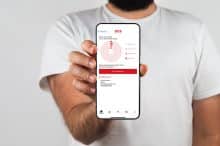As a sales professional, you know how important it is to measure your success. The sales process is a complex one, and there are many metrics you can use to gauge how well you’re doing. But which sales metrics matter? And how can you use them to optimize your sales process?
In this blog post, we’ll take a deep dive into the key sales metrics you should be tracking and offer tips on how to use them to improve your sales process and drive more revenue.
How do you ensure sales targets are met?
As a sales professional, meeting sales targets is a crucial aspect of your role. It requires a combination of strategic planning, effective communication, and a deep understanding of your target audience. Here are some tips to help you ensure sales targets are met:
1. Set clear and achievable targets: The first step towards meeting sales targets is to set clear and achievable goals. This involves identifying your target market, defining your products or services, and setting a realistic timeline for achieving your goals.
2. Qualify leads: One of the key factors in achieving sales targets is to focus on the right leads. By qualifying leads, you can prioritize your efforts and ensure that you are spending your time and resources on leads that are most likely to convert into sales.
3. Nurture leads: Once you have qualified your leads, the next step is to nurture them. This involves building relationships with your leads, understanding their pain points, and providing them with relevant information and resources that can help them make an informed decision.
4. Use data and analytics: To ensure that you are on track to meet your sales targets, it’s important to use data and analytics. This involves tracking your sales performance, identifying areas of improvement, and adjusting your strategy accordingly.
5. Communication and collaboration: Finally, effective communication and collaboration are essential for meeting sales targets. This involves working closely with your team members, sharing information and insights, and collaborating on strategies to achieve your sales goals.
1. Sales Revenue
The most obvious sales metric is sales revenue. After all, the ultimate goal of any sales team is to generate revenue. Sales revenue can be measured in several ways, including:
- Total revenue
- The average revenue per customer
- Revenue per sales rep
It’s important to track your sales revenue over time to see how it’s trending. Are you hitting your targets? Are you growing year after year? Are certain products or services driving more revenue than others? Understanding these trends can help you make strategic decisions about your sales process.
2. Conversion Rates
Conversion rates are another important sales metric. This refers to the percentage of leads or prospects that become customers. Conversion rates can be calculated at various stages of the sales process, including:
- Lead to opportunity conversion rate
- Opportunity to deal with conversion rate
- Deal to close conversion rate
By tracking your conversion rates at each stage, you can identify where you may be losing potential customers and make adjustments to your sales process. For example, if you have a low lead-to-opportunity conversion rate, you may need to improve your lead generation strategies or better qualify your leads before passing them on to your sales team.
3. Sales Velocity
Sales velocity is a metric that combines both sales revenue and conversion rates to measure how quickly you’re closing deals. This metric can be calculated by multiplying your average deal size by your conversion rate and dividing that number by your average sales cycle length.
For example, if your average deal size is $10,000, your conversion rate is 25%, and your average sales cycle length is 30 days, your sales velocity would be $8,333 per day ($10,000 x 25% / 30 days). By tracking your sales velocity, you can identify areas where you may be able to speed up your sales process and close deals more quickly.
4. Sales Activities
While revenue and conversion rates are important, they don’t tell the whole story. It’s also important to track the sales activities that lead to those results. This can include:
- Number of calls or emails per sales rep
- Number of demos or presentations given
- Number of proposals sent
By tracking these activities, you can identify which ones are most effective at driving revenue and adjust your sales process accordingly. For example, if you notice that sales reps who send more proposals tend to close more deals, you may want to encourage your team to send more proposals.
5. Customer Acquisition Cost
Customer acquisition cost (CAC) is the cost of acquiring a new customer. This metric can be calculated by dividing your total sales and marketing expenses by the number of new customers acquired over a specific period.
For example, if you spend $50,000 on sales and marketing in a month and acquire 50 new customers, your CAC would be $1,000 per customer ($50,000 / 50 customers). By tracking your CAC, you can identify which sales and marketing channels are most effective at acquiring new customers and adjust your strategy accordingly.
6. Customer Lifetime Value (CLV)
Customer lifetime value (CLV) is the total amount of revenue a customer is expected to generate throughout their relationship with your company. This metric helps businesses understand the long-term value of each customer and allows them to focus on retaining customers over time. A high CLV indicates that a customer is likely to continue doing business with your company, which can have a significant impact on your overall revenue.
By understanding your CLV, you can adjust your sales strategies to focus on retaining existing customers. This can be achieved through providing excellent customer service, offering personalized product recommendations, and providing loyalty programs that incentivize repeat business. By optimizing your sales process to increase customer retention, you can increase your CLV and generate more revenue over time.
7. Time to Close
Time to close is an essential sales metric that measures the amount of time it takes to close a deal from the initial contact. This metric is important because the longer it takes to close a deal, the greater the chance that the lead will lose interest or find a competitor to work with instead.
By tracking your time to close, you can identify bottlenecks in your sales process and make data-driven decisions to improve your sales performance. For example, if you notice that it takes a long time for leads to move from the initial contact to the proposal stage, you may want to consider improving your lead nurturing process or providing more targeted and relevant content to move leads through the funnel more quickly.
To improve your time to close metric, consider the following tips:
- Set clear goals and expectations for your sales team. Make sure they understand the importance of moving deals through the sales cycle quickly and efficiently.
- Use a CRM system to track leads and automate follow-up tasks. This can help ensure that leads are being contacted promptly and can reduce the time it takes to move them through the sales process.
- Provide training and resources to your sales team to help them overcome objections and close deals more quickly. This can include sales scripts, objection-handling guides, and product training.
- Identify and eliminate bottlenecks in your sales process. Look for areas where deals tend to get stuck and find ways to streamline those parts of the process.
- Regularly review and analyze your time to close metrics to identify areas for improvement. Use this information to make data-driven decisions about how to optimize your sales process.
8. Win/Loss Ratio
The win/loss ratio is a critical sales metric that measures the number of deals won compared to the number of deals lost. This metric provides valuable insights into the effectiveness of your sales strategies and can help you identify areas for improvement.
To improve your win/loss ratio, consider the following tips:
- Analyze your lost deals to identify common objections or reasons for losing the deal. Use this information to adjust your sales pitch or product offering to better meet the needs of your target market.
- Provide your sales team with ongoing training and coaching to help them improve their sales skills and overcome objections.
- Focus on building relationships with your customers and providing exceptional customer service. This can help improve customer loyalty and increase your chances of winning future deals.
- Regularly review and analyze your win/loss ratio to identify areas for improvement. Use this information to make data-driven decisions about how to optimize your sales process.
Optimizing Your Sales Process
Once you have a clear understanding of your sales metrics, you can begin to optimize your sales process for maximum efficiency. Here are some tips for using sales metrics to optimize your sales process:
- Identify Areas for Improvement: Use your sales metrics to identify areas where your sales process could be improved. For example, if your win/loss ratio is low, you may need to re-evaluate your sales pitch or training programs.
- Set Goals: Use your sales metrics to set realistic goals for your sales team. For example, if your conversion rate is 20%, set a goal to increase it to 25% within a specific timeframe.
- Monitor Progress: Regularly track your sales metrics to monitor progress towards your goals. This will allow you to make adjustments to your sales process as needed.
- Provide Training and Support: Use your sales metrics to identify areas where your sales team needs additional training or support. For example, if your sales velocity is low, you may need to provide your sales team with additional resources or training to help them move deals through the sales process more quickly.
- Reward Success: Use your sales metrics to reward and recognize success within your sales team. For example, if a sales rep achieves a high win/loss ratio, provide them with a bonus or other incentives to encourage continued success.
How do you ensure customer loyalty during the sales process?
In the highly competitive marketplace, customer loyalty is one of the most significant factors for business growth and success. The sales process is critical for building strong relationships with customers, and it requires a dedicated effort to ensure their satisfaction and loyalty. Here are some ways to ensure customer loyalty during the sales process:
1. Nurture Leads: The sales process starts with lead generation, and nurturing those leads is a crucial part of building customer loyalty. Take the time to understand your leads’ needs and preferences and provide them with personalized attention and relevant information that addresses their pain points.
2. Build Trust: Trust is a fundamental element of customer loyalty. Build trust by being transparent, honest, and authentic throughout the sales process. Avoid making false promises or exaggerating the benefits of your product or service.
3. Provide Exceptional Customer Service: Customer service plays a critical role in ensuring customer loyalty. Train your sales team to provide prompt, friendly, and knowledgeable responses to customer inquiries and complaints. Make it easy for customers to contact you and provide multiple channels for communication.
4. Qualify Leads: Not all leads are created equal. Qualifying leads in the early stages of the sales process can save time and resources while also increasing customer loyalty. Focus on leads that have a genuine interest in your product or service and are a good fit for your business.
5. Offer Incentives: Incentives can be a powerful tool for building customer loyalty during the sales process. Offer discounts, free trials, or other incentives.
What steps should be taken to ensure an effective sales process?
An effective sales process is crucial for any business looking to close deals and grow revenue. Here are some steps that should be taken to ensure an effective sales process:
1. Define your target audience: Having a clear idea of who your ideal customer is will help you tailor your sales pitch and messaging to meet their specific needs and pain points. This will increase your chances of closing the deal.
2. Build a sales funnel: A sales funnel is a series of stages that your potential customer goes through on their journey to becoming a paying customer. Build a sales funnel that guides them through the process step-by-step, from initial awareness to final conversion.
3. Qualify your leads: Not all leads are created equal. Some are ready to buy, while others are still in the research phase. Make sure you qualify your leads to ensure you’re spending your time and resources on those most likely to convert.
4. Build relationships: Building relationships with your leads is key to nurturing them through the sales funnel. Make sure you keep in touch and provide value-added content that helps them make informed decisions.
5. Close the deal: Closing the deal is the ultimate goal of any sales process. Make sure you have a clear process in place for closing deals, including a pricing strategy, contract negotiations, and any necessary follow-up.
6. Monitor and optimize: Don’t just set it and forget it. Monitor your sales process and look for opportunities to optimize it for better results. Use data and analytics to track your progress.< /span>
Conclusion
As a sales professional, measuring your success is crucial, and tracking the right sales metrics can help you optimize your sales process and drive more revenue. By setting clear and achievable targets, qualifying leads, nurturing them, using data and analytics, and effective communication and collaboration, you can ensure that your sales targets are met. Additionally, tracking sales revenue, conversion rates, sales velocity, sales activities, customer acquisition cost, customer lifetime value, and time to close can help you make strategic decisions about your sales process and adjust it accordingly to drive more revenue.
Understanding these sales metrics can help you identify where you can improve your sales process and which strategies to use to achieve your sales goals. Ultimately, tracking and analyzing these metrics can help you drive growth, optimize your sales process, and achieve long-term success. So start measuring your sales metrics today and take your sales process to the next level!











